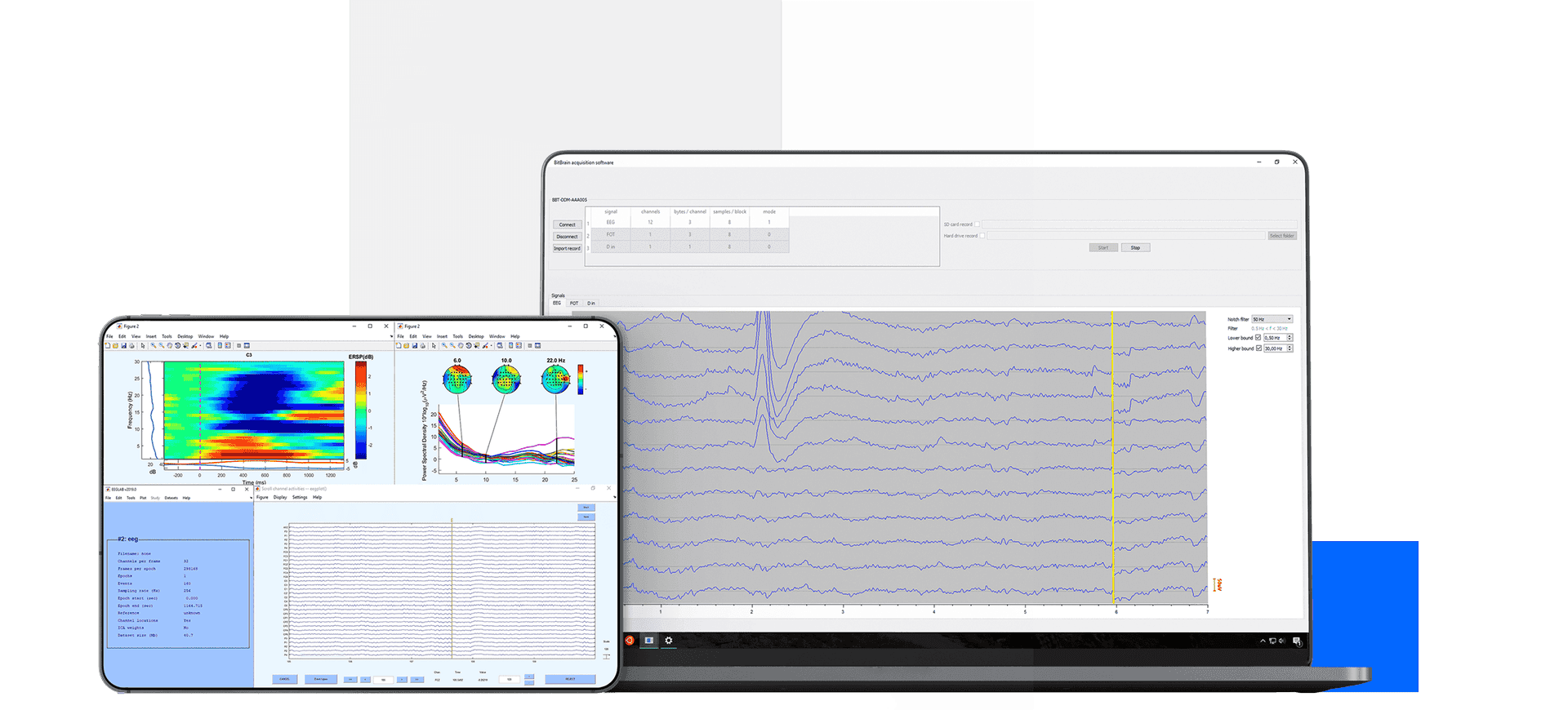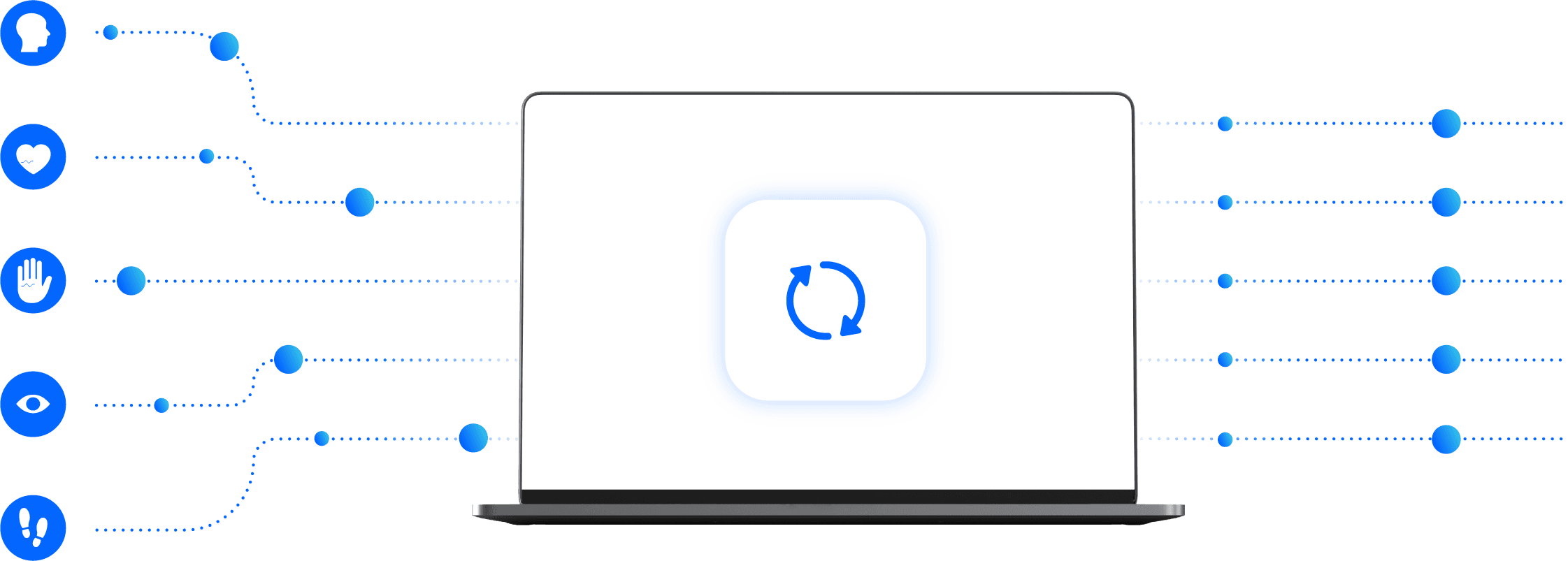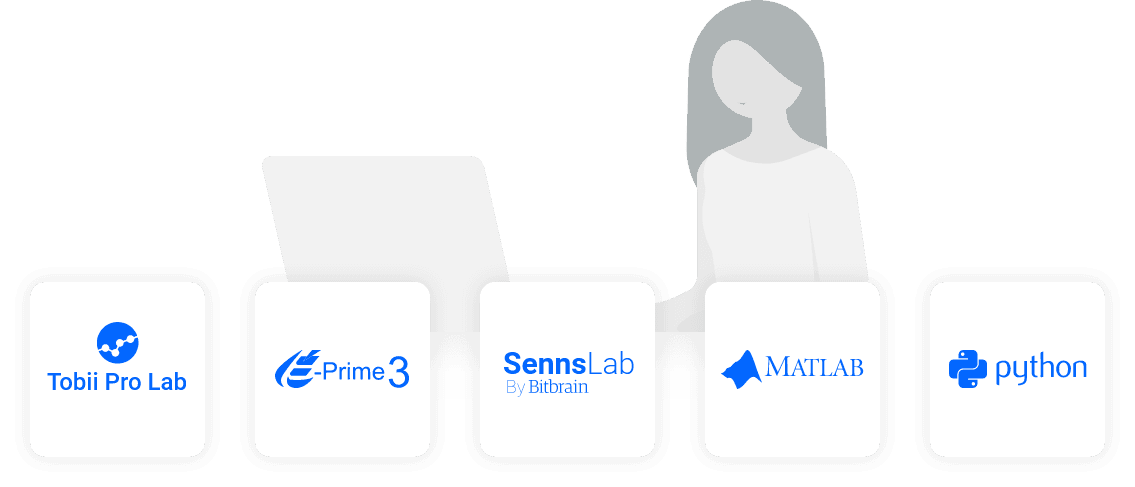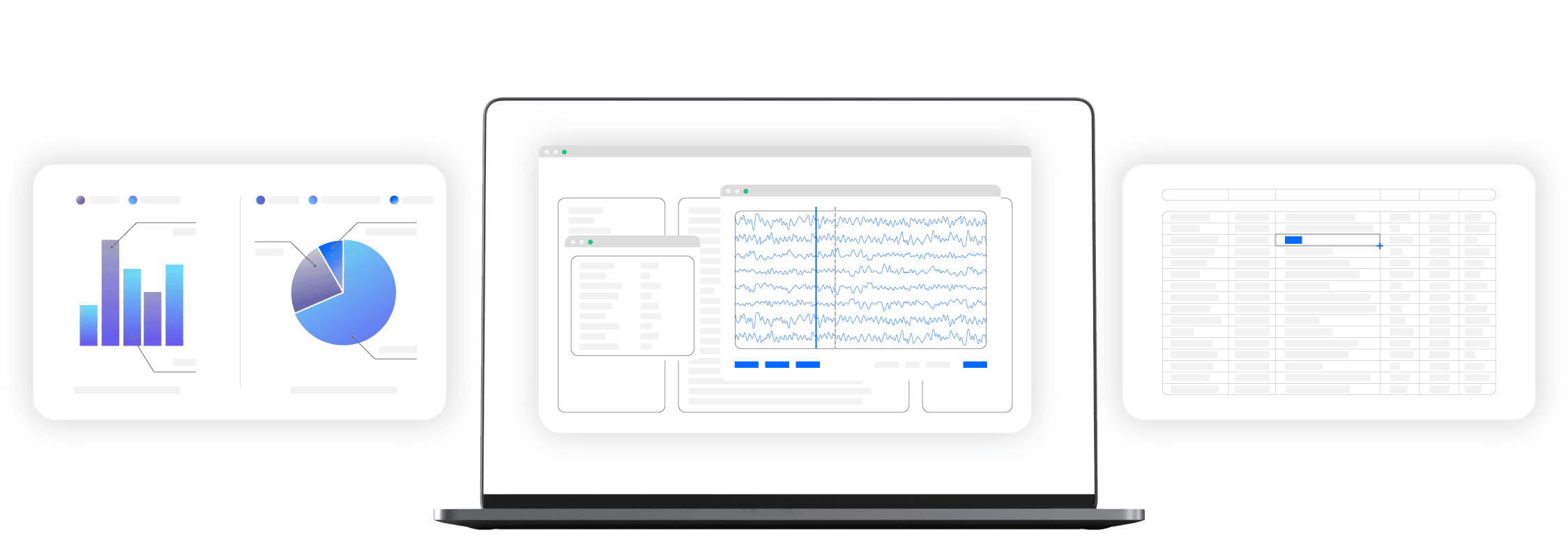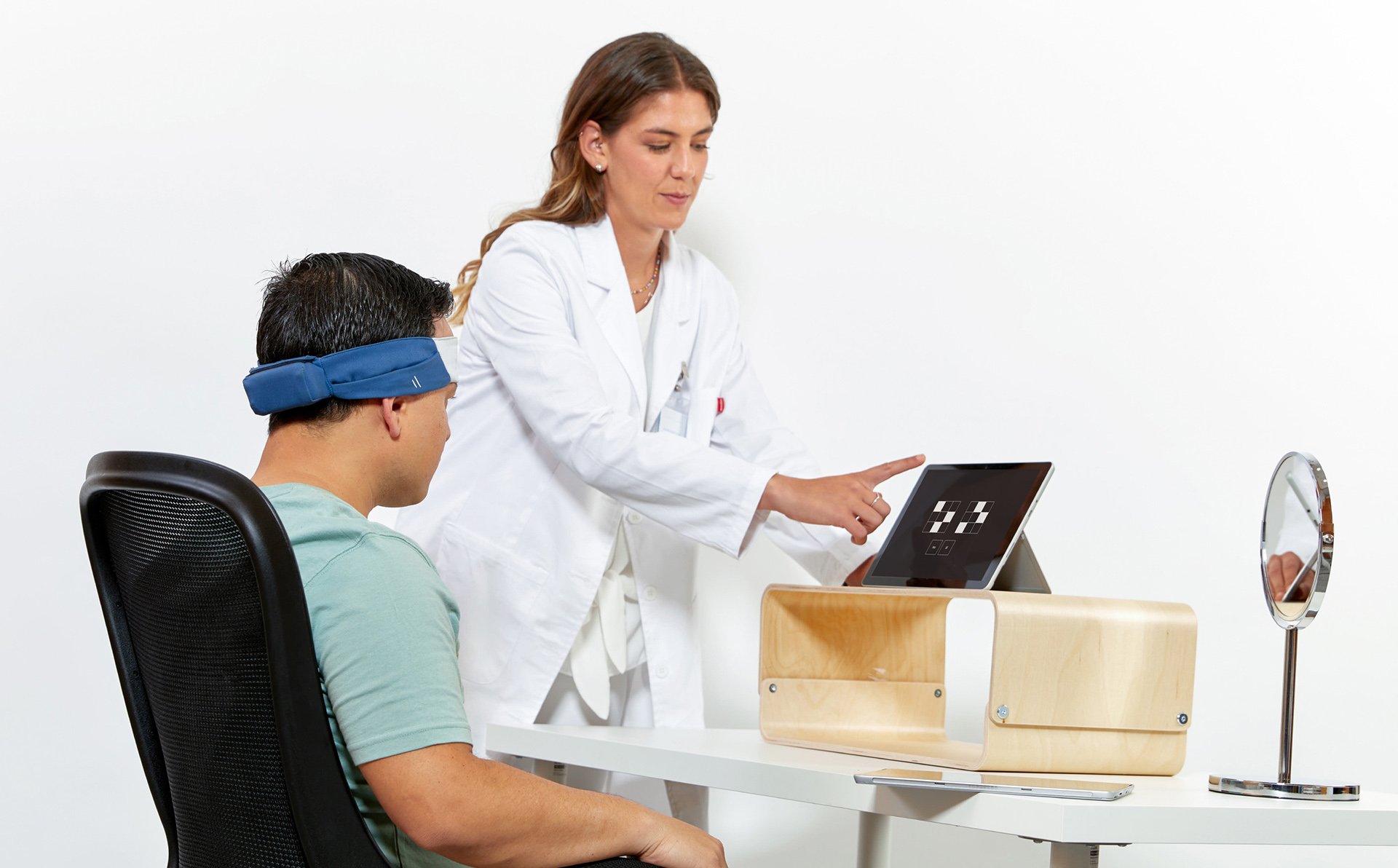
Neuroscience & Psychology Research
Enabling human behavior research both in the laboratory and in real-world research scenarios.
Human Behavior Research in the real-world
Neuroscience and psychology aim to gain a deeper understanding of the brain and mind. By recording behavioral and physiological responses to certain stimuli and situations, we are able to reconstruct and analyze how our brain processes and uses information.
This can be done in the laboratory, but due to advances in flexibility and precision, we can now move these experiments into a real-world context while preserving ecology. Being able to perform out-of-the-lab studies is an asset that expands the possibilities of our experimentation in any related research field.
Common Research Fields
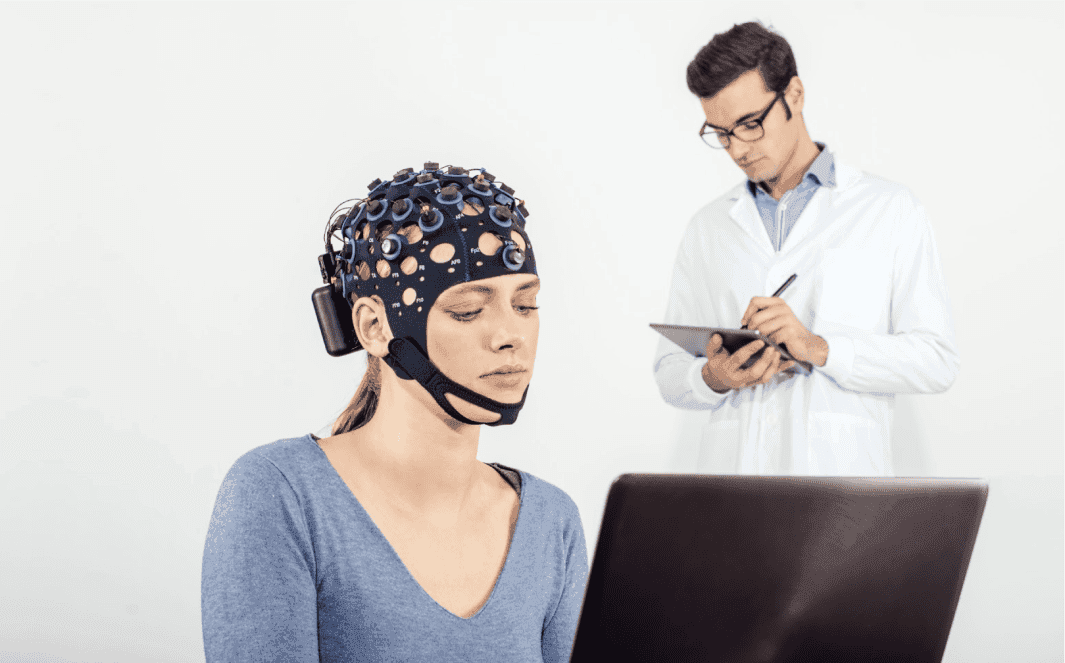
Cognitive science is the scientific study of the brain and its processes. It’s a multidisciplinary field that integrates knowledge from psychology, neuroscience, linguistics, and or anthropology. Cognitive researchers focus on the study of how information is acquired, processed, manipulated, used, and recovered by our brains, involving several study areas such as perception, attention, memory, learning, reasoning, language, and emotion.
Among other recording methods, the registration of the behavioral and physiological response of the participants to certain stimuli is one of the most widely used. Commonly employed sensors include EEG, GSR, EMG, ECG, eye tracking, temperature, respiration, and others, which help enable the full recording of the response to stimuli
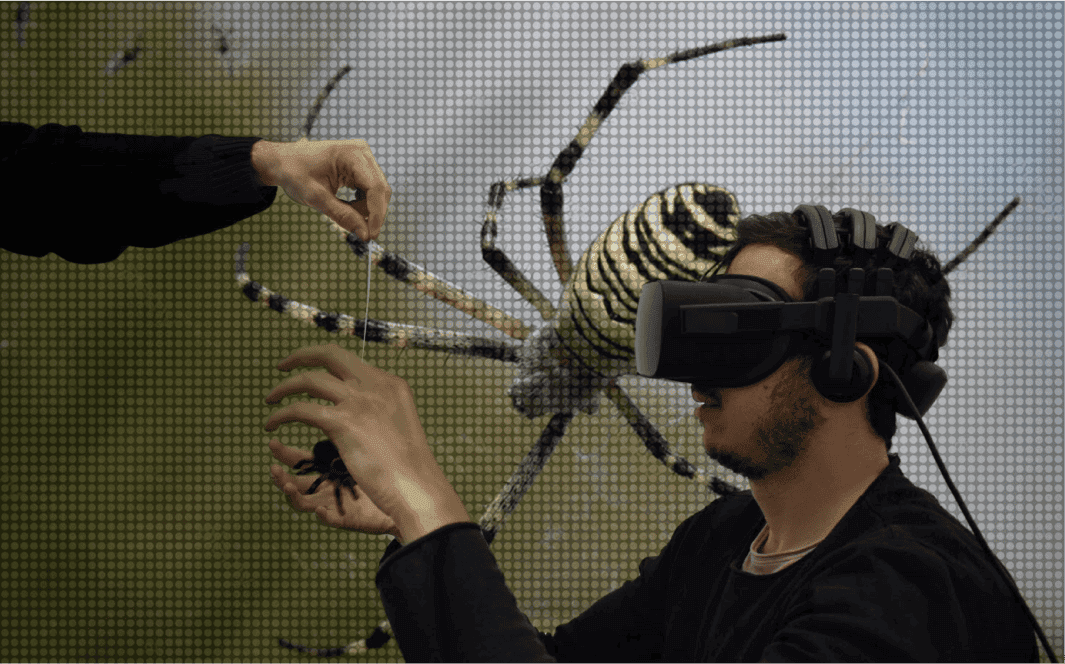
Empirical results obtained from clinical psychology research are an essential guide for professionals to develop effective interventions. This leads to proven and reliable results that improve lives, enhance interactions and social relationships, overcome addictions, and help patients with a wide variety of mental health issues.
Recent research on both diagnostics and psychotherapies has benefited from advances in technology, which has allowed researchers and practitioners to integrate EEG into their day-to-day data collection. This includes the use of virtual reality (VR) combined with EEG, or the development of portable equipment that can be taken to clinics or natural, participant-friendly environments.

Social psychology investigates the factors and conditions that shape individuals' actions, feelings, or beliefs in relation to other people in order to understand social behavior. Several fields are explored, such as social cognition, social identity, attitudes, discrimination, or group behavior, to name a few. The study of social behavior is as complex as the behaviors themselves, which is why it is essential to employ empirical methods of collecting and analyzing data.
By recording multiple simultaneous physiological devices set up on several participants when interacting with each other, we are able to gain insight into the social conduct and widen the boundaries of our research.
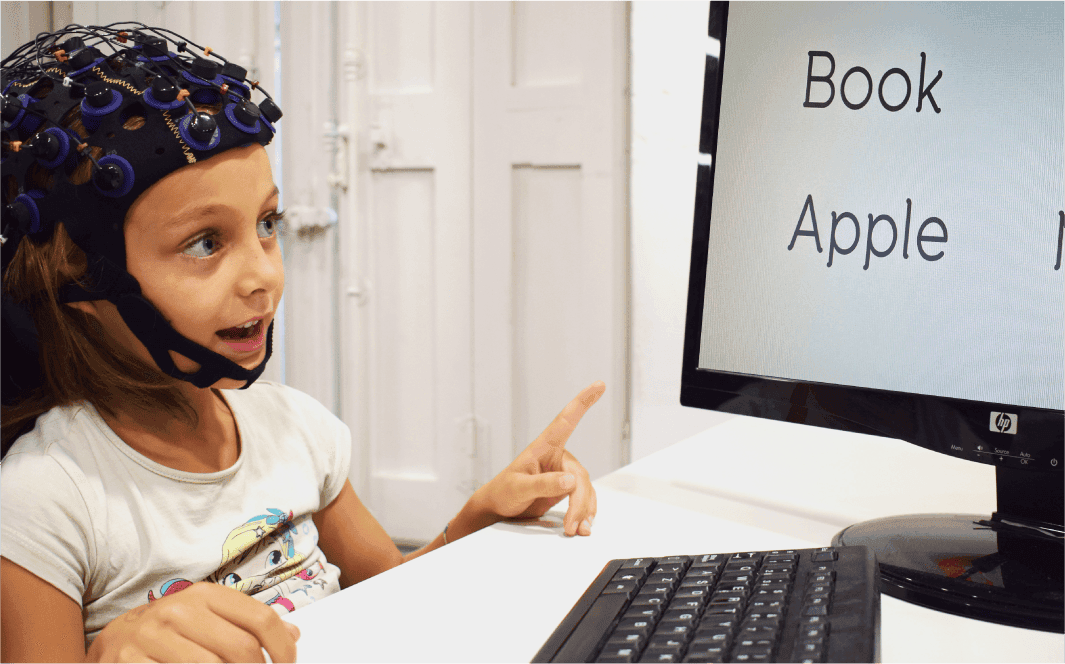
Developmental psychologists study how our cognition, emotion, social functioning, and behavior evolve throughout our entire lifetime, from infancy through childhood and adolescence, into adulthood and latelife. How do different aspects of our mind, such as attention, motivation, sleep, language learning, responses to different stimuli, change over time? What is the cause of these variations? Are these normative and shared variations among all of us, do they belong to a specific population group, or are they singular to the individual?
To explore these phenomena, physiological acquisition sensors that are comfortable, stable and adaptive, and the accurate sync of all the employed devices are key to make the research smoother for both the researcher and the participant. This is especially critical with infant or child participant populations, or research into individuals with atypical neurological development.
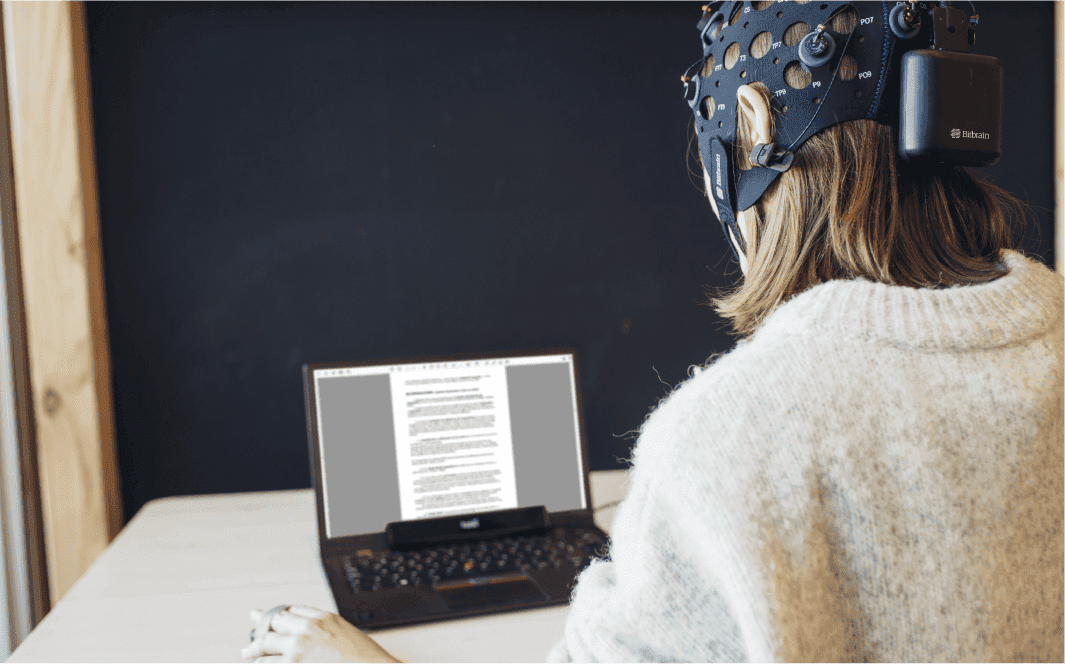
Linguistics is the scientific study of human language. Researchers study languages as a function of syntax, sounds, and meaning, including the historical, cultural, and social influences on language.
Linguists often use eye tracking as a method of understanding reading behavior and language processing on written words. Researchers also use EEG as a way of recording brain responses to auditory and visual language stimuli, and both techniques can successfully be combined for an understanding of attention and reaction to language.
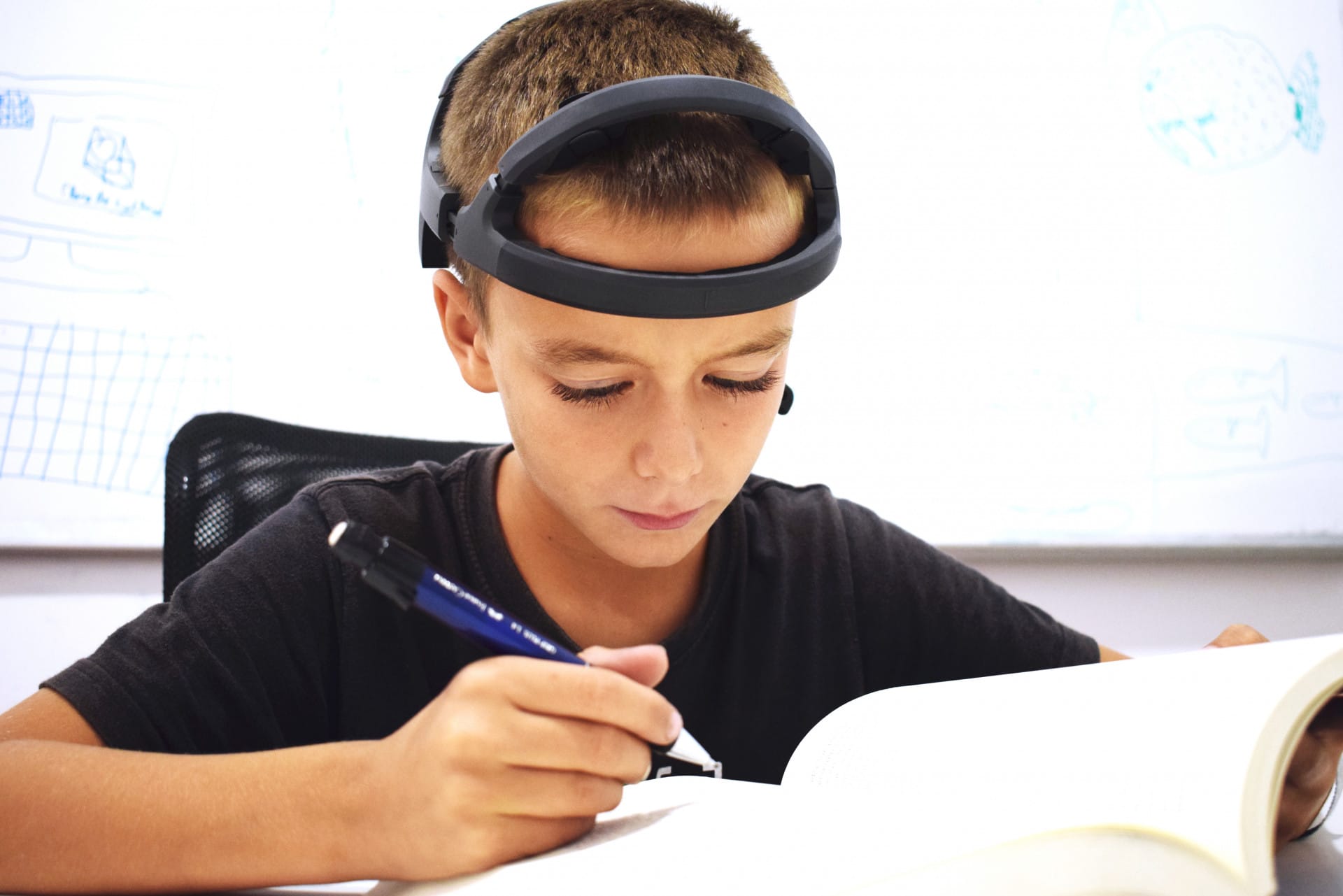
Human education research includes the study of how humans learn and teach, and all the variables and processes involved, including development, motivation, environment, individual differences, or the teaching method itself
The systematic collection and analysis of physiological and behavioral data can add a lot of value to educational research, but it can be tedious if the technology is not designed to preserve the ecology of the experiment and thus facilitate natural behavior, especially with younger participants. Therefore, the flexibility and portability of the physiological devices employed will allow you to move research from the laboratory to the classroom, allowing data recording during normal classroom activities.
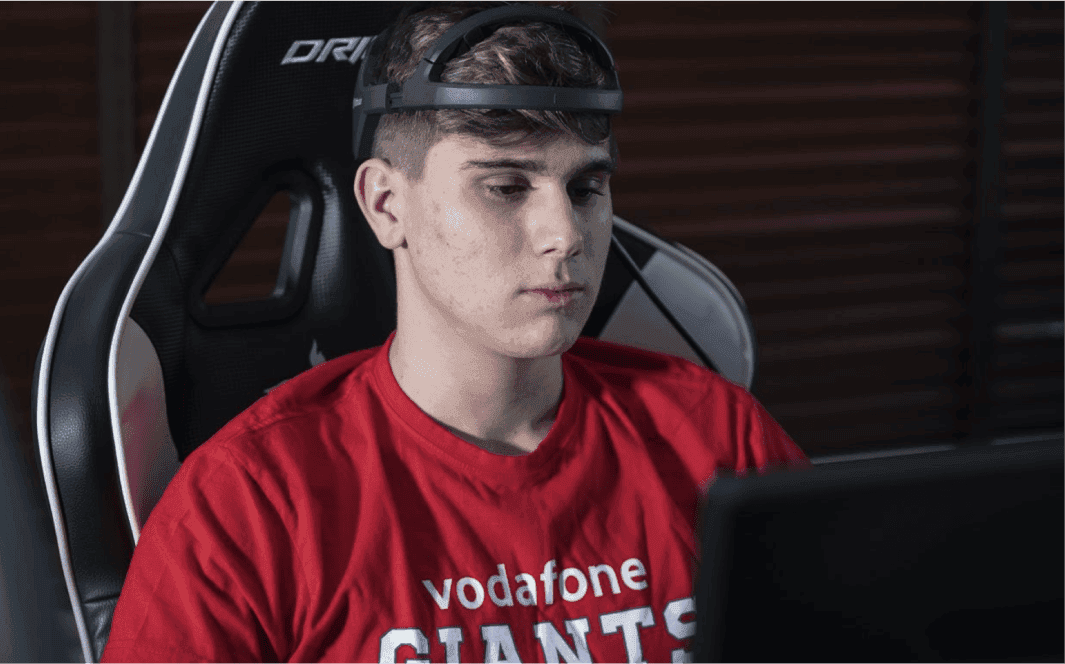
Kinesiologists focus on the study of human body movement, incorporating many stimuli, including motion tracking, electrophysiology, brain and physiological monitoring, strength and conditioning, psychology, etc. Sports research incorporates physiology, psychology, anatomy, biomechanics, biochemistry, biokinetics to understand the human response to exercise, training, changing environments and rehabilitation.
Mobility and unobtrusiveness are key components needed in kinesiology and sports research. To study the processes behind physiological reactions, we need to take our research into the field without losing data quality.
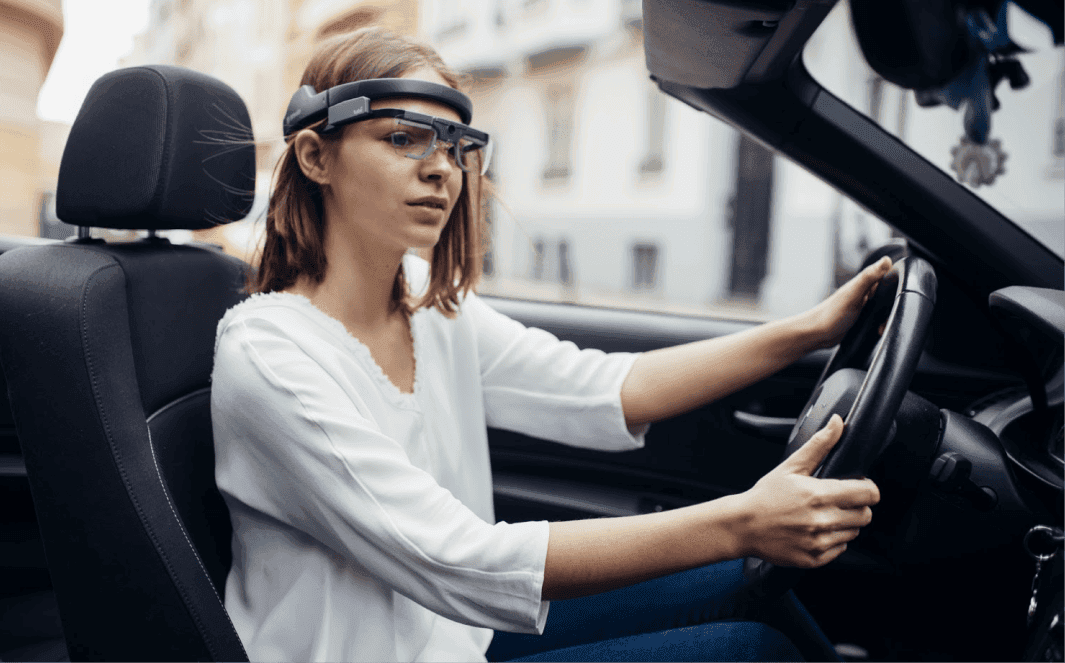
Human Factors research covers the design and analysis of human-machine and human-technological interactions, especially in the aviation, automotive, and industrial areas. It seeks to study the user’s reaction to the environment, behavior, fatigue levels, cognitive load, and any other cognitive process that may occur during technological interactions.
The research scenarios are complex since they require the use of multiple sensory modalities and precise synchronization between them. The objective is to understand the cognitive physiological processes involved and suggest design changes in order to improve products, interfaces, and procedures.
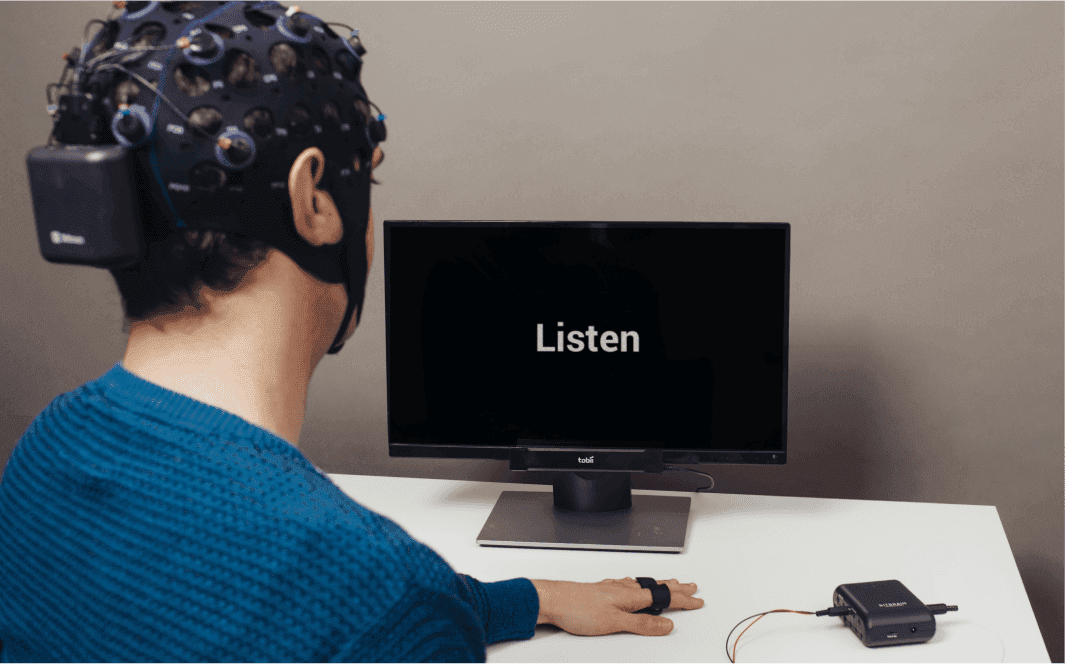
Psychology research in music is a scientific field that aims to empirically explain how music affects our experience and behavior, including how the music is perceived, processed, created, and incorporated into our lives. Research areas involve cognitive sciences, neurophysiology, cultural and social psychology, and evolution. The empirical results of these study fields are used to impact on education, marketing, performance, wellness, or health.
To analyze the neuropsychological effect that music stimuli have on our cognitive processes, EEG, EMG, ECG, GSR, temperature, respiration, and many other physiological sensors all perfectly sync with the music piece employed.

Ergonomics focuses on the study of human physiological response, muscle contractions, forces, and other parameters during interactions.
Making research in this field also requires the use of synchronized multimodal sensors, in real contexts, and that allow freedom of movement of the subject. The goal is to identify in detail which actions and movements are potentially harmful or represent an increased risk of a critical failure in order to improve products, interfaces, and procedures.
Research equipment
Software tools
Bitbrain software tools, included with any hardware, are complete platforms for data acquisition and programming, with large compatibility with real-time I/O and data processing third parties.
SennsLab is an optional integration software for experimental design, flexible stimulation, and for data collection that seamlessly synchronizes 35+ sensor modalities. Raw data can be exported to third-parties (Matlab, Python, Neuroguide, and others).
SennsMetrics is an optional analysis tool that automatically decodes raw data into 9 selected metrics, developed for researchers that look for an additional layer of signal decoding
